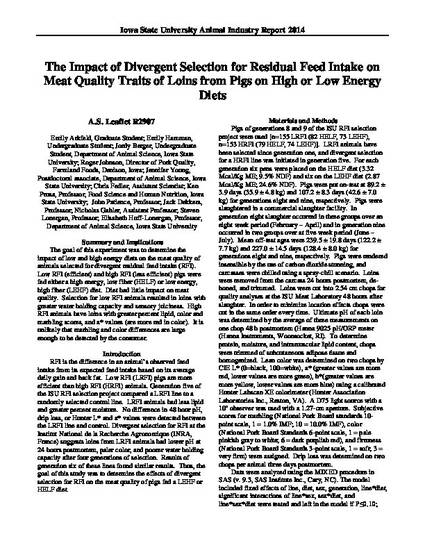
Unpublished Paper
The Impact of Divergent Selection for Residual Feed Intake on Meat Quality Traits of Loins from Pigs on High or Low Energy Diets
Animal Industry Report
Extension Number
ASL R2907
Publication Date
2014
Disciplines
Topic
Swine
Summary and Implications
The goal of this experiment was to determine the impact of low and high energy diets on the meat quality of animals selected for divergent residual feed intake (RFI). Low RFI (efficient) and high RFI (less efficient) pigs were fed either a high energy, low fiber (HELF) or low energy, high fiber (LEHF) diet. Diet had little impact on meat quality. Selection for low RFI animals resulted in loins with greater water holding capacity and sensory juiciness. High RFI animals have loins with greater percent lipid, color and marbling scores, and a* values (are more red in color). It is unlikely that marbling and color differences are large enough to be detected by the consumer.
Copyright Holder
Iowa State University
Copyright Date
2014
DOI
https://doi.org/10.31274/ans_air-180814-1191
Language
en
Citation Information
Emily Arkfield, Emily Hamman, Jordy E. Berger, Roger Johnson, et al.. "The Impact of Divergent Selection for Residual Feed Intake on Meat Quality Traits of Loins from Pigs on High or Low Energy Diets" (2014) Available at: http://works.bepress.com/john-patience/61/
